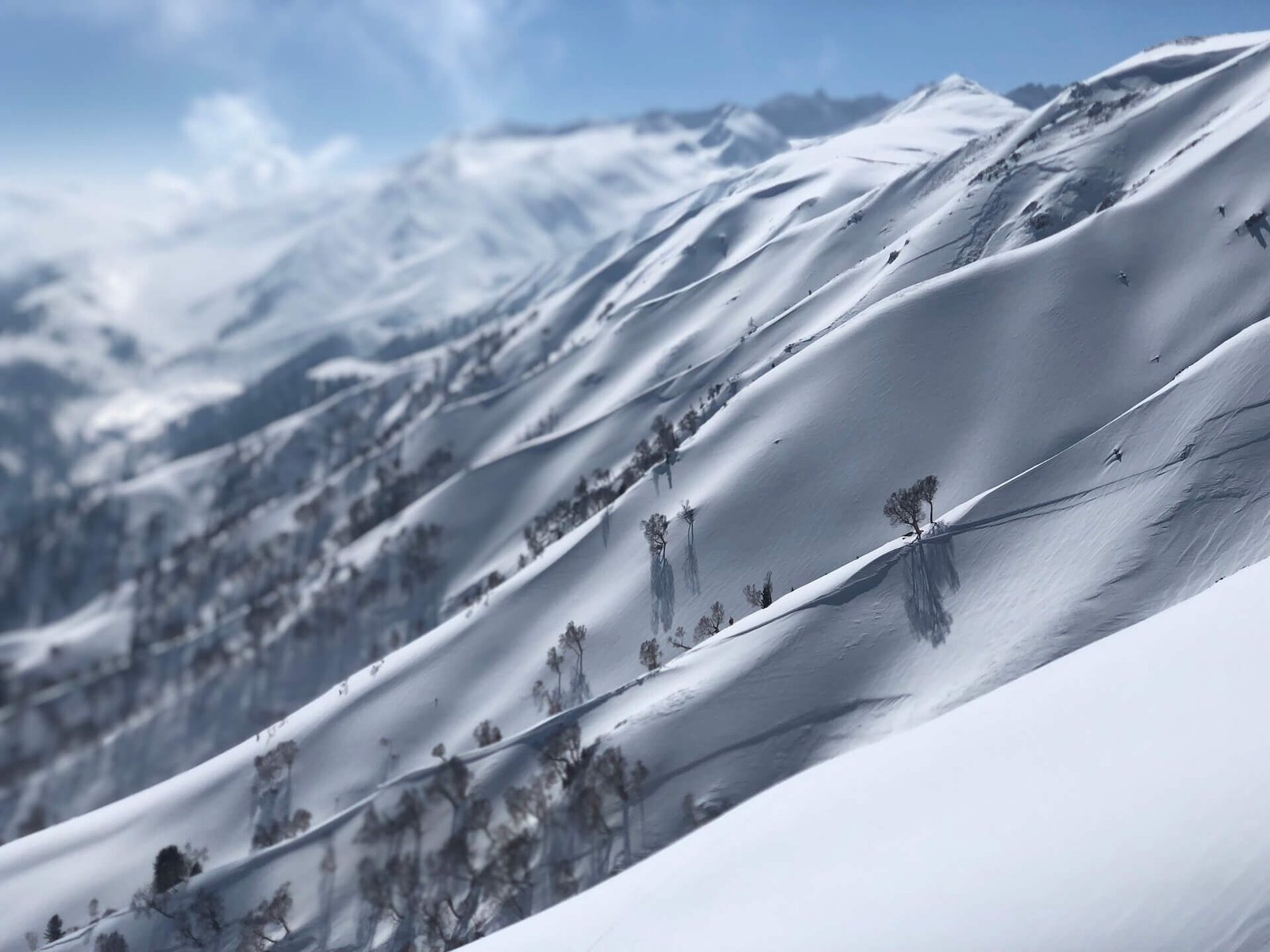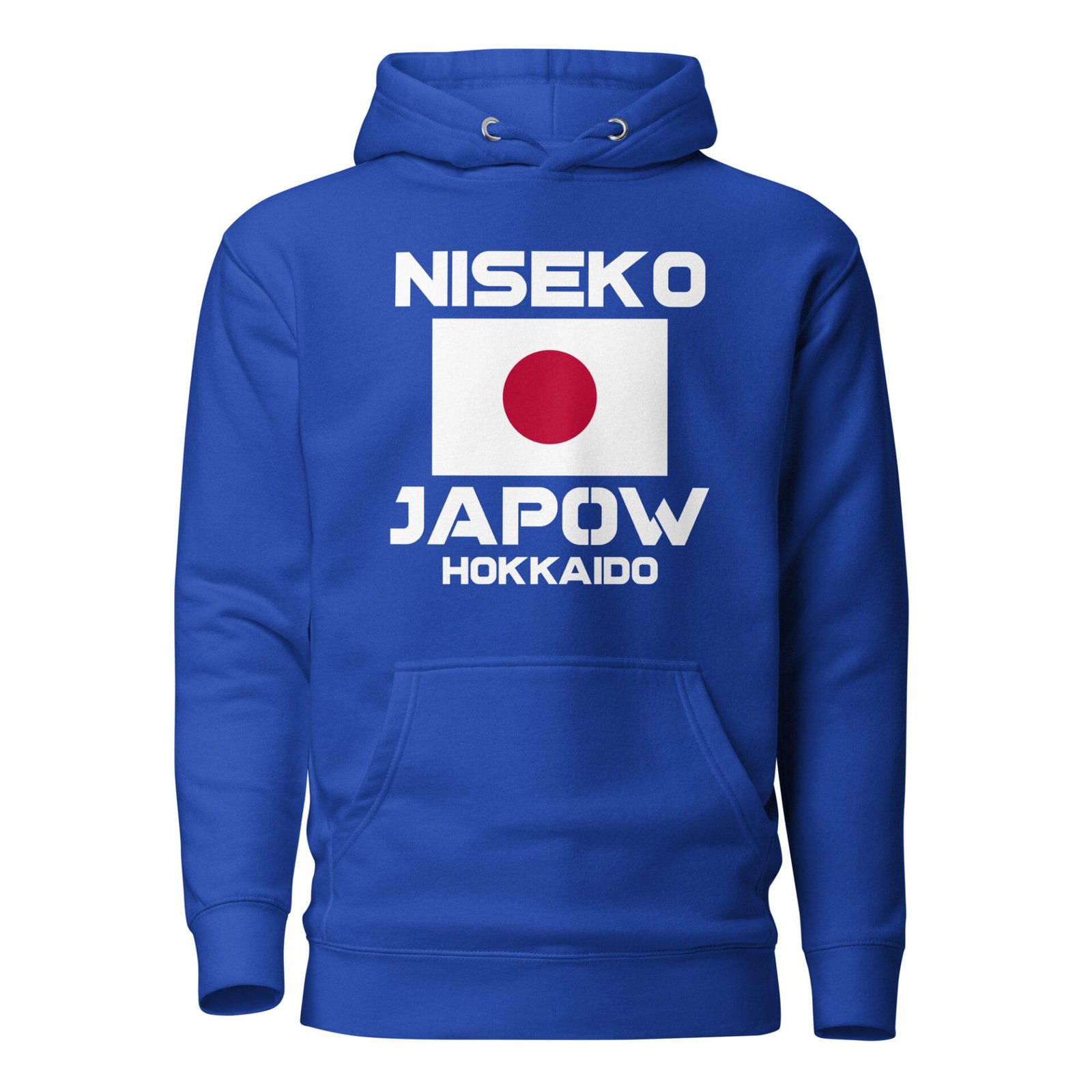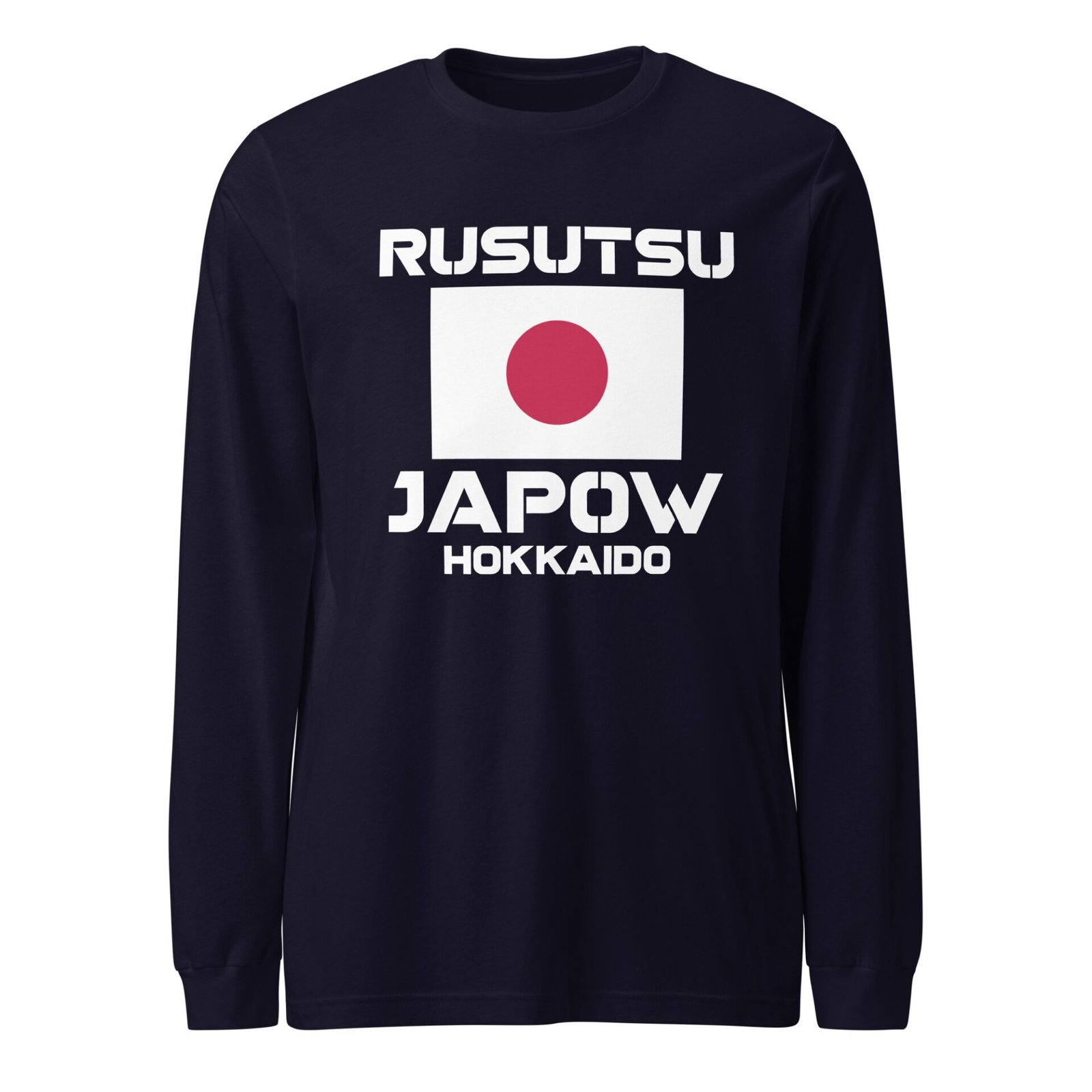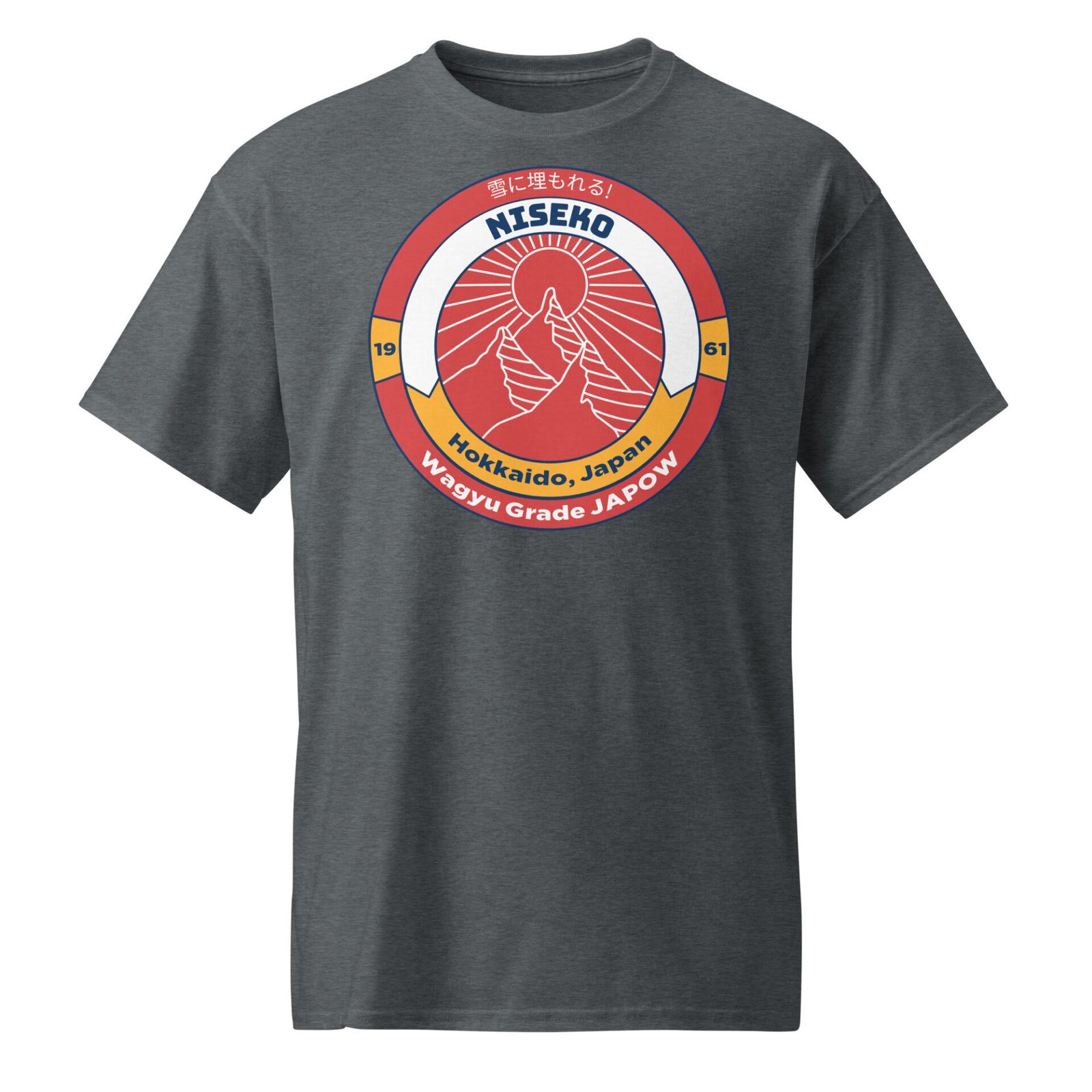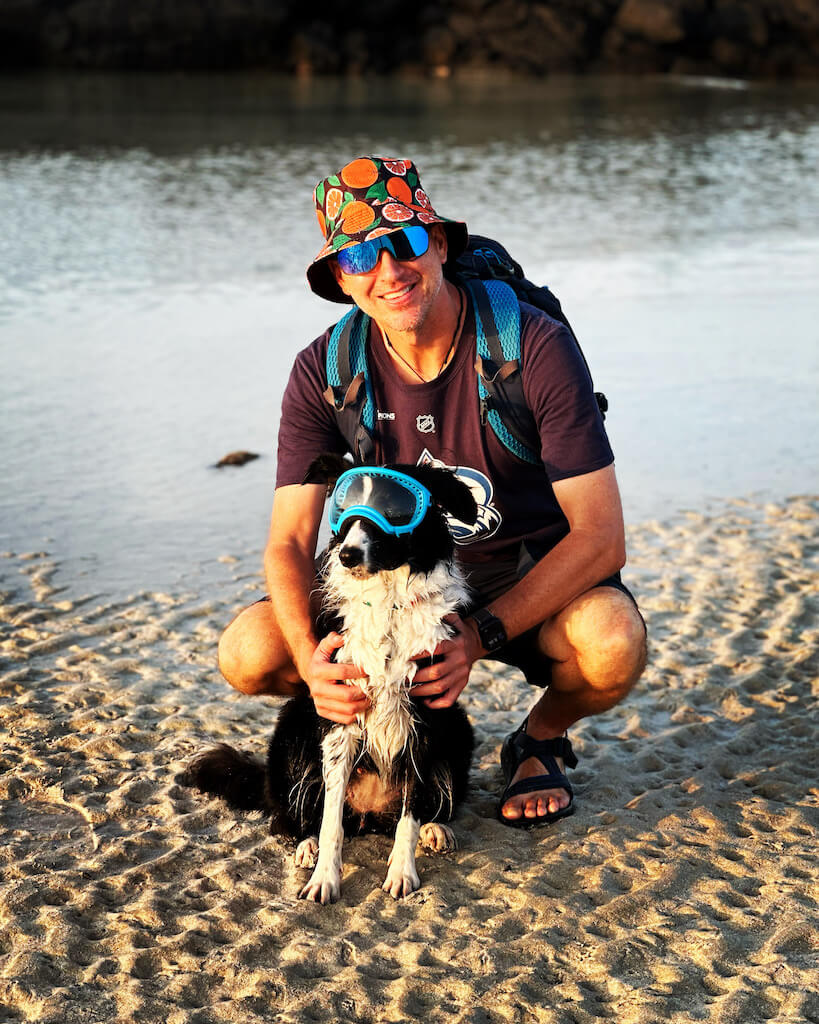Wondering whether Niseko or Rusutsu is the better call in 2025? I skied both this winter and put together this honest comparison so you can match the right resort to your style.
Quick heads up: This post may contain affiliate links to gear, hotels, flights, or experiences I’ve used — or genuinely recommend. If you book through one, I may earn a commission at no extra cost to you. Full disclosure here.
The first time I skied Niseko was back in February 2014, when I was still in full backpacker mode. I stayed in a budget ski hostel, rode the train in from Sapporo, and got the kind of Japow week you dream about: fresh snow every single day until my legs were begging for mercy. At the time, I was something of a novelty as an American skiing in Japan.
Fast forward to February 2025, and the trip looked very different. My brother flew in from Denver with a friend, we rented a car at the airport, and checked into a cozy Niseko Airbnb. This time, we split our ski days between Niseko and Rusutsu, just a short 20-minute drive apart, chasing the best snow and smallest crowds each day.
Both resorts still deliver the deep Hokkaido powder that put them on the map, but the vibe, scale, and experience couldn’t be more different. Niseko is the big, international hub with more terrain, more nightlife, and, these days, more crowds. Rusutsu is quieter, more local-feeling, and where we found our best powder day of the trip. In this post, I’ll break down what it’s really like skiing both in 2025 so you can decide which one’s right for your style — or why you might want to ski both.
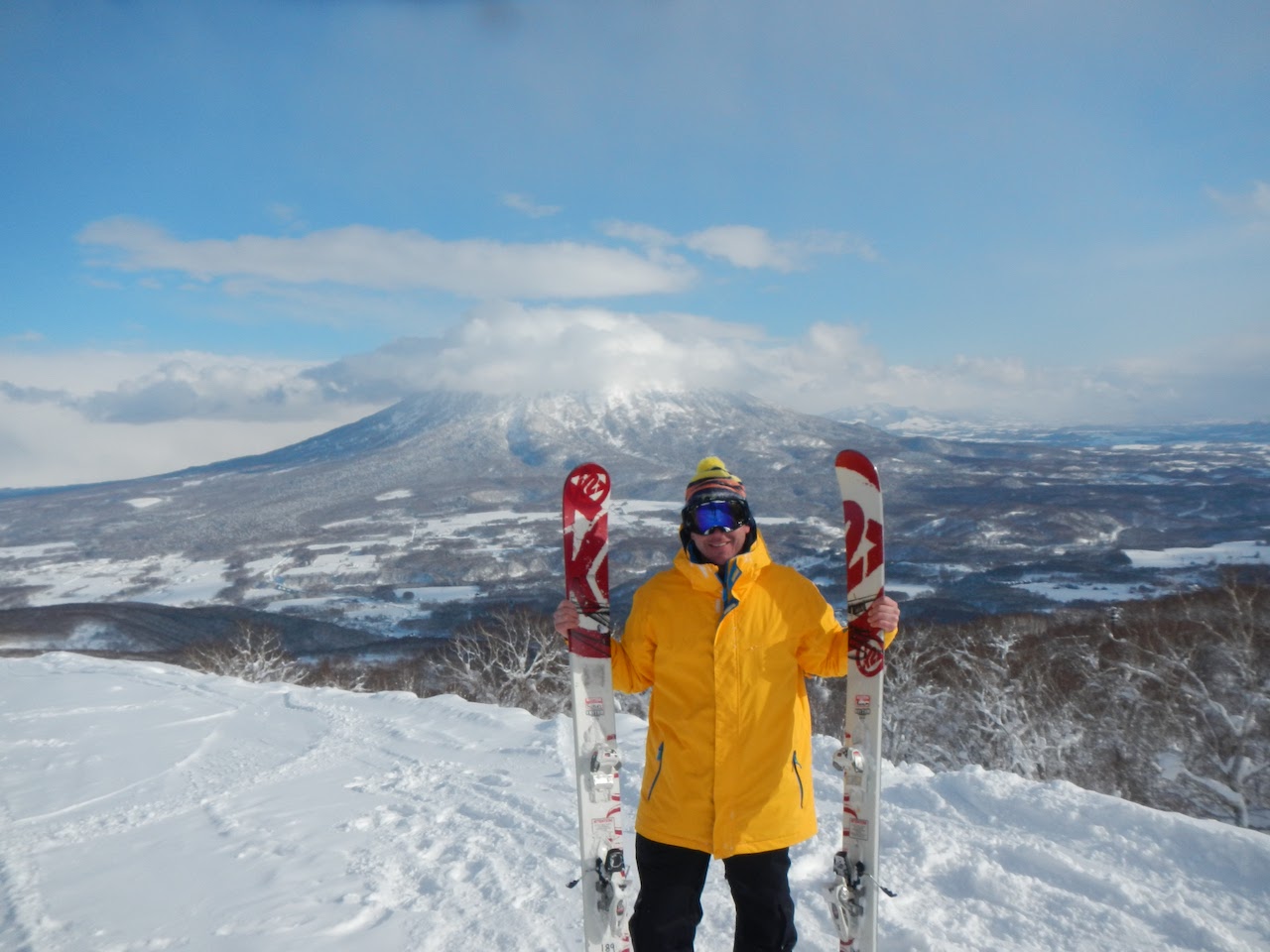
Niseko vs Rusutsu: Quick Comparison for 2025
If you’re just after the TL;DR, here’s how Niseko and Rusutsu stacked up after skiing both in February 2025.
| Category | Niseko | Rusutsu |
|---|---|---|
| Snow | Consistent Japow with lots of storm cycles; occasional wind holds on upper lifts. | Same legendary powder; our deepest day of the trip was here. |
| Terrain | Niseko United’s four linked areas for a big-resort feel and varied lines. | Smaller footprint but plenty for a few days, with excellent trees and side hits. |
| Crowds | Busier overall; lift lines and fully booked restaurants are common in peak weeks. | Quieter lifts and a more local feel; generally less waiting. |
| Nightlife | Lots of bars, izakayas, cafés; reservations strongly recommended. | Low-key après; mainly hotel lounges and quiet evenings. |
| Lodging | Wide range from hostels to luxury hotels and VRBO options across budgets. | Fewer choices overall; mostly larger resort hotels and limited budget options. |
| Price | Full-day ~¥12,000 (lower with online deals); multi-day and point passes available. | Full-day ~¥14,500 (¥11,200 online); 5-hour ~¥12,500 (¥9,800 online). |
| Pass Access | Ikon access (up to 7 days depending on pass type). | Epic Pass: 5 consecutive complimentary days. |
| Access | Roughly 2–2.5 hours from New Chitose; car, shuttle, or bus. | About 1.5–2 hours from New Chitose; very easy by car from Niseko (~20 minutes). |
| Overall vibe | International hub with high energy and lots of choice. | Relaxed, uncrowded, powder-focused. |
Note: Both resorts offer online discounts on lift tickets — booking ahead can save a significant amount compared to counter prices.
⛷️ What It’s Like Skiing Niseko in 2025
I first skied Niseko more than a decade ago, when it still felt like a bit of a secret. In 2025, it’s anything but. The skiing is still phenomenal, and the Japow still delivers, but the experience comes with more people, more infrastructure, and a more polished (and busier) resort scene.
❄️ Snow & Terrain
Niseko United combines four interconnected ski areas — Grand Hirafu, Hanazono, Niseko Village, and Annupuri — giving you a huge variety of runs, tree lines, and backcountry access gates. On a powder day, it’s easy to spend hours lapping your favorite lift or chasing fresh lines into the sidecountry.
For a better sense of the mountain layout and where each base area sits, here’s the official Niseko United trail map, covering Grand Hirafu, Hanazono, Niseko Village, and Annupuri.
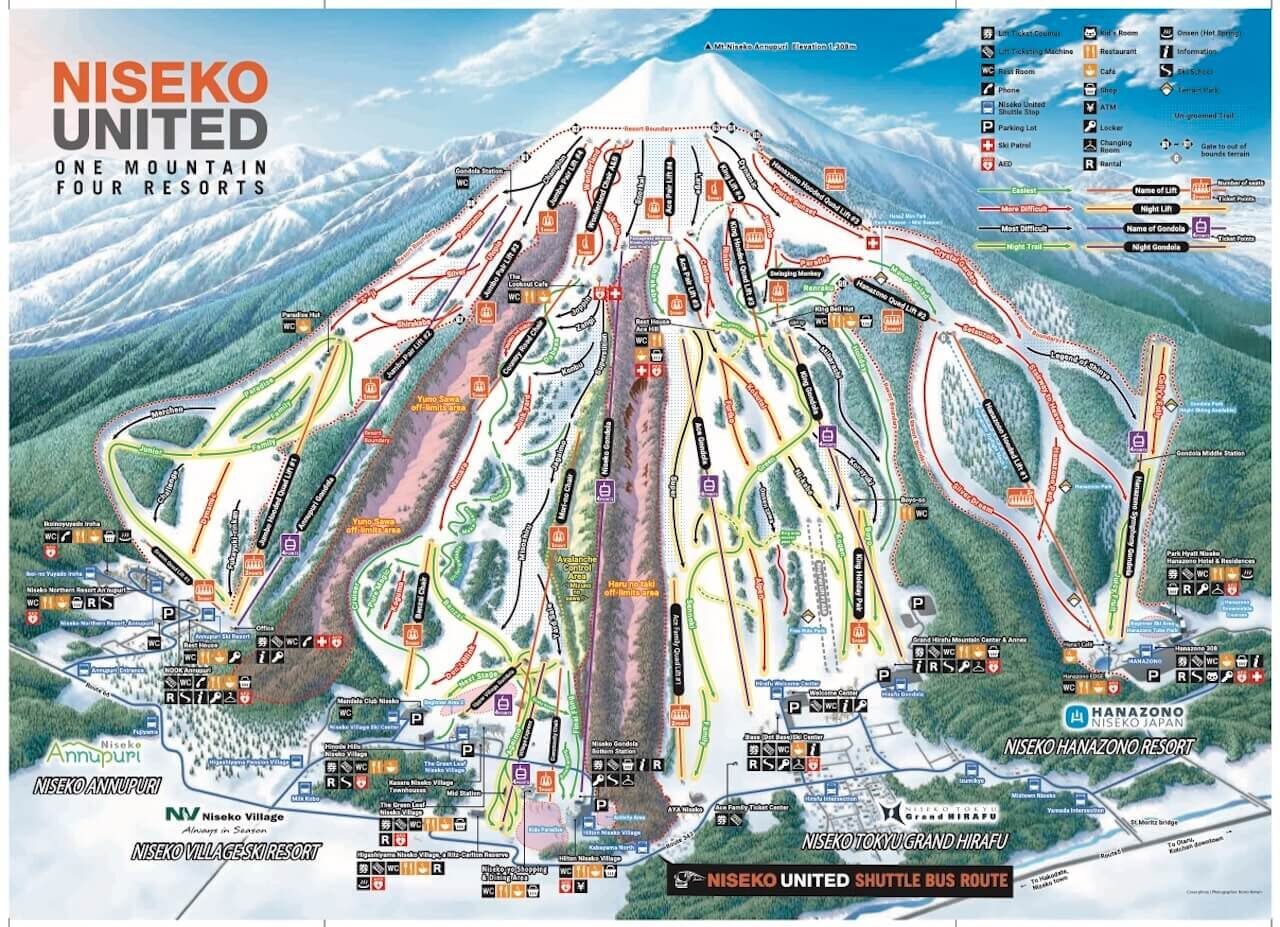
The snow is as good as ever, but wind can sometimes close upper lifts and gate access. On my trip, we had one day where the Hanazono backcountry gates reopened after being shut for several days, and the ridge hike looked like ants marching toward the goods. Still worth it, but expect to share those fresh turns with plenty of other powder hunters.
🎥 Here’s a quick clip from that day:
🏔️ Crowds & Atmosphere
Niseko has firmly cemented itself on the global ski map, thanks in part to Ikon Pass access and strong international marketing. These days, you’ll hear plenty of American, Australian, and European accents in the lift lines, and dining reservations are a must in peak season.
The atmosphere is lively, especially in Hirafu Village, where you’ll find bars, restaurants, and après spots buzzing into the night. If you like the social side of ski trips, Niseko delivers.
🎿 Gear & Rentals – Rhythm Japan
For this trip, I skipped bringing my own skis from Korea and rented from Rhythm Japan in Hirafu. I’d rented from them before and knew their gear was top-notch. This time I ended up on the latest K2 Reckoners, which were perfect for deep Hokkaido powder.
Powder skis aren’t just nice to have in Niseko; they’re the difference between floating effortlessly and fighting to stay on top. Unless you have a great baggage deal, it’s usually easier and more cost-effective to rent locally. Rhythm’s staff speak English, have multiple locations, and don’t mind if you take their gear to other resorts like Rusutsu.
👉 Book Rhythm rentals via Klook here
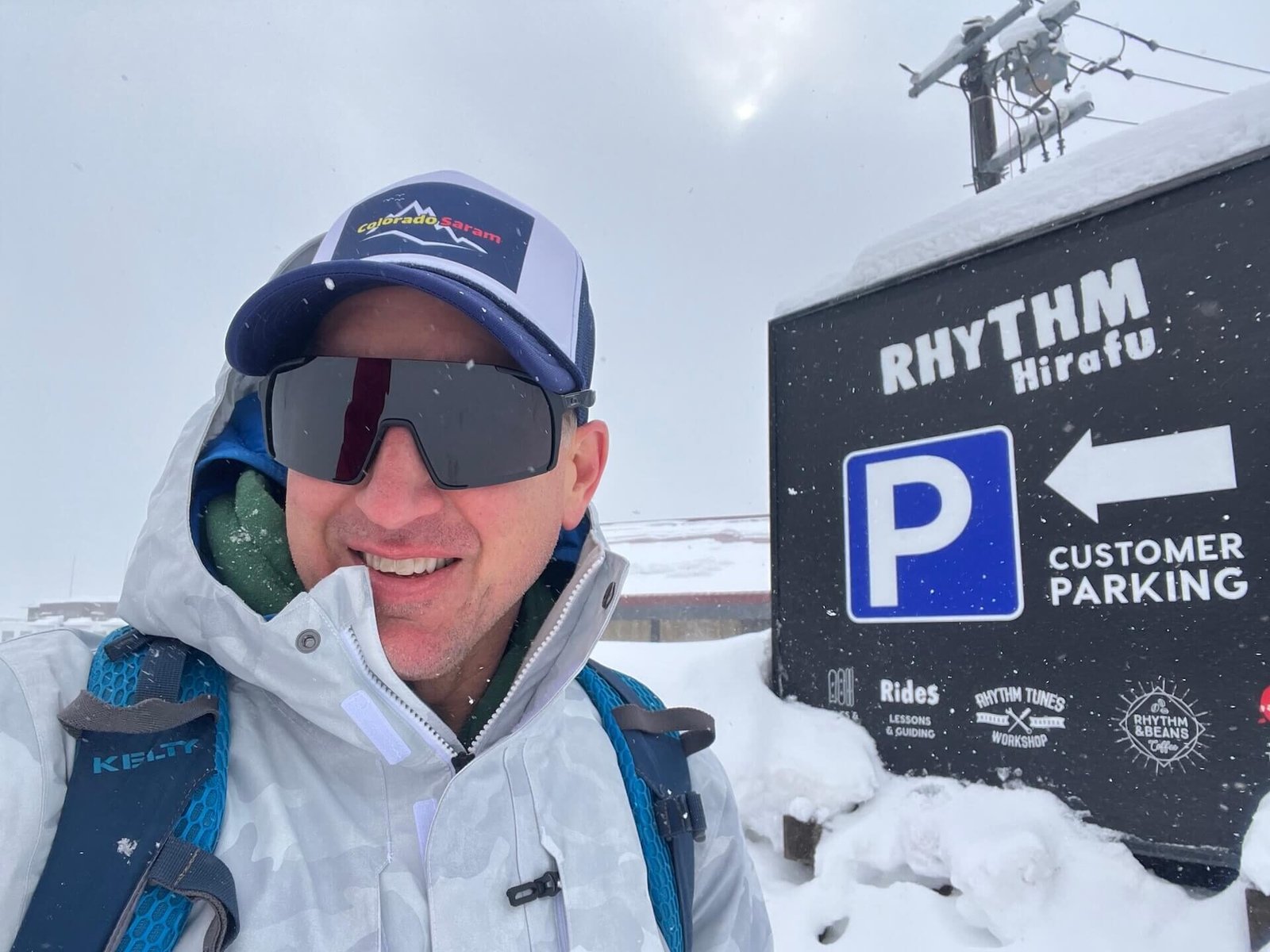
🛏️ Lodging & Dining
We based ourselves in an Airbnb near Annupuri, which made it easy to reach any of the four ski areas by car. Niseko’s lodging scene is extensive, from budget hostels to luxury hotels like the Park Hyatt at Hanazono. If you want slopeside convenience, you’ll find plenty of ski-in/ski-out hotels and condos on Trip.com or Booking.com. For more space or a home-like setup, VRBO has some great chalet-style rentals right in the village. Whatever your budget, book early — peak season fills up fast.
Dining is just as varied, with everything from ramen counters to upscale izakayas. The catch? Reservations are often essential, especially for the most popular spots. Many restaurants in Niseko use TableCheck for online booking, so it’s worth making those plans before you even arrive.
Agoda is one of the most popular hotel booking apps in Asia, so it’s worth exploring:
🏂 What It’s Like Skiing Rusutsu in 2025
Just a short drive from Niseko, Rusutsu offers a very different feel. It’s smaller in scale, but that’s part of its charm. The pace is more relaxed, the lift lines are shorter, and the vibe feels more local — without losing the deep Hokkaido powder you came for.
❄️ Snow & Terrain
Rusutsu may not match the sheer size of Niseko United, but it still offers more than enough terrain for a multi-day ski trip. The resort spans three distinct peaks — West Mountain, East Mountain, and Mount Isola — each with its own mix of tree runs, groomed pistes, and wide-open bowls.
On our trip, we scored our best powder day of the week here. With fewer people on the slopes, the fresh snow in the trees lasted far longer than at Niseko. There’s still an early morning rush for first tracks, but once those initial lift lines disperse, the rest of the mountain remains blissfully uncrowded.
For a clearer picture of the layout, here’s the official Rusutsu Resort trail map, showing lift locations, main runs, and how the three peaks connect:
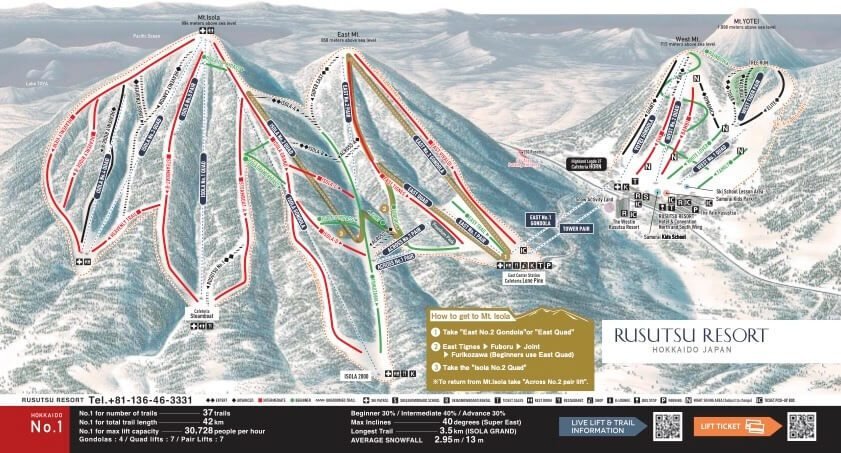
🏔️ Crowds & Atmosphere
Compared to Niseko, Rusutsu feels quieter and more low-key. You won’t find a buzzing après-ski scene or rows of late-night bars, but you will find a friendly, easygoing atmosphere and a stronger sense of skiing among locals.
For some, the lack of nightlife is a drawback. For others, it’s exactly the reason to come.
🏨 Lodging & Amenities
We didn’t stay overnight in Rusutsu, since our Niseko Airbnb made day-tripping easy. If you do want to base yourself here, most accommodations are large-scale resort hotels, like The Westin Rusutsu Resort and Rusutsu Resort Hotel & Convention.
These properties offer ski-in/ski-out convenience and full-service amenities, but there’s less variety compared to Niseko’s mix of hotels, lodges, and vacation rentals. You can browse options on Trip.com or Booking.com, keeping in mind that the quieter vibe extends to the base village.
🚗 Getting Between Niseko and Rusutsu
On my first trip to Niseko back in 2014, I took the train from Sapporo. It worked fine for a backpacker budget, and I didn’t mind the slower pace. For this 2025 trip, with my brother and his friend flying in from Denver, we went with a rental car — and I’d recommend it if your budget allows. The difference in flexibility was night and day.
🛻 Why I Recommend Renting a Car
With a car, you can move easily between Niseko’s four base areas and make last-minute calls on whether to head over to Rusutsu based on snow and crowds. The drive between the two resorts takes only about 20–30 minutes, so you can chase fresh powder without relying on fixed bus or train schedules.
We rented a Nissan SUV from New Chitose Airport, which handled the snowy Hokkaido roads without issue. If you’re coming from North America, remember that Japan drives on the left-hand side. And since Hokkaido gets a ton of snow, you’ll want a rental with proper winter tires and 4WD — plus confidence driving in winter conditions.
For booking, I used EconomyBookings this trip with no problems, but I’ve also had good results browsing DiscoverCars for competitive rates. Both offer convenient pickup options at New Chitose Airport.
Pro Tip: If you’re unsure whether to rent a car or rely on public transport, I offer free, personalized Asia travel planning sessions via Zoom or email. You can find more details here.
🚆 Getting There Without a Car
If driving isn’t for you, it’s still easy to reach both resorts using Japan’s excellent train and bus network. The JR train runs from Sapporo or New Chitose Airport toward Niseko, with a transfer to a local line or bus for the final stretch. It’s scenic but slower, and you’ll need to coordinate with resort shuttles or hotel pickups.
Rusutsu doesn’t have a direct train station, so the main alternatives are resort buses from Sapporo, Niseko, or New Chitose Airport. If you’re traveling light and staying slopeside, this can work fine — just be aware you’ll have less flexibility to chase conditions between the two resorts once you’re there.
For those planning more rail travel around Hokkaido, a JR Hokkaido Rail Pass can be a great value. It offers unlimited travel on JR lines (including to Niseko) for a set number of days and can be booked in advance through Klook. This not only locks in your pass but also saves you from navigating ticket machines or language barriers on arrival.
🎿 Final Thoughts: Niseko vs Rusutsu in 2025
If your schedule and logistics allow, the best move is to ski both Niseko and Rusutsu. They are only about 20 to 30 minutes apart by car, yet snowfall, crowds, and even the feel of the mountains can be very different on the same day. With a rental car, it is easy to watch the weather, check reports, and pick the better option each morning.
If you have to choose just one, it comes down to the type of trip you want. If you like being in the heart of the action, with busy après bars, packed restaurants, and a big international scene, Niseko is the call. It is actually four ski areas combined into one large resort, with the most terrain, the widest range of lodging, and a lot of energy.
If you prefer something quieter and more laid back, but still want deep Japow and great trees, Rusutsu might be a better fit. It is calmer, has fewer crowds, and still delivers on storm days. There are high end options like the Westin Rusutsu, but without the busy village feel Niseko is known for.
My honest take after skiing both in 2014 and 2025: if you can, ski them both. Let conditions, crowds, and your personal style guide where you go each day.
If you are planning your own Hokkaido ski trip and want a deeper look at real world costs and logistics, I break down our 2025 expenses and share extra tips here:
👉 Read my 2025 Hokkaido trip tips and cost breakdown →
🙏 Support the Blog
This post is not sponsored by any resort, hotel, or brand. A few of the links you see here are affiliate links, which means I may earn a small commission if you make a booking through them at no extra cost to you.
If this comparison helped you decide between Niseko and Rusutsu or shape your Hokkaido ski plans, you can support the site through Buy Me a Coffee. It is never required, but it genuinely helps me keep creating guides like this and researching new destinations.
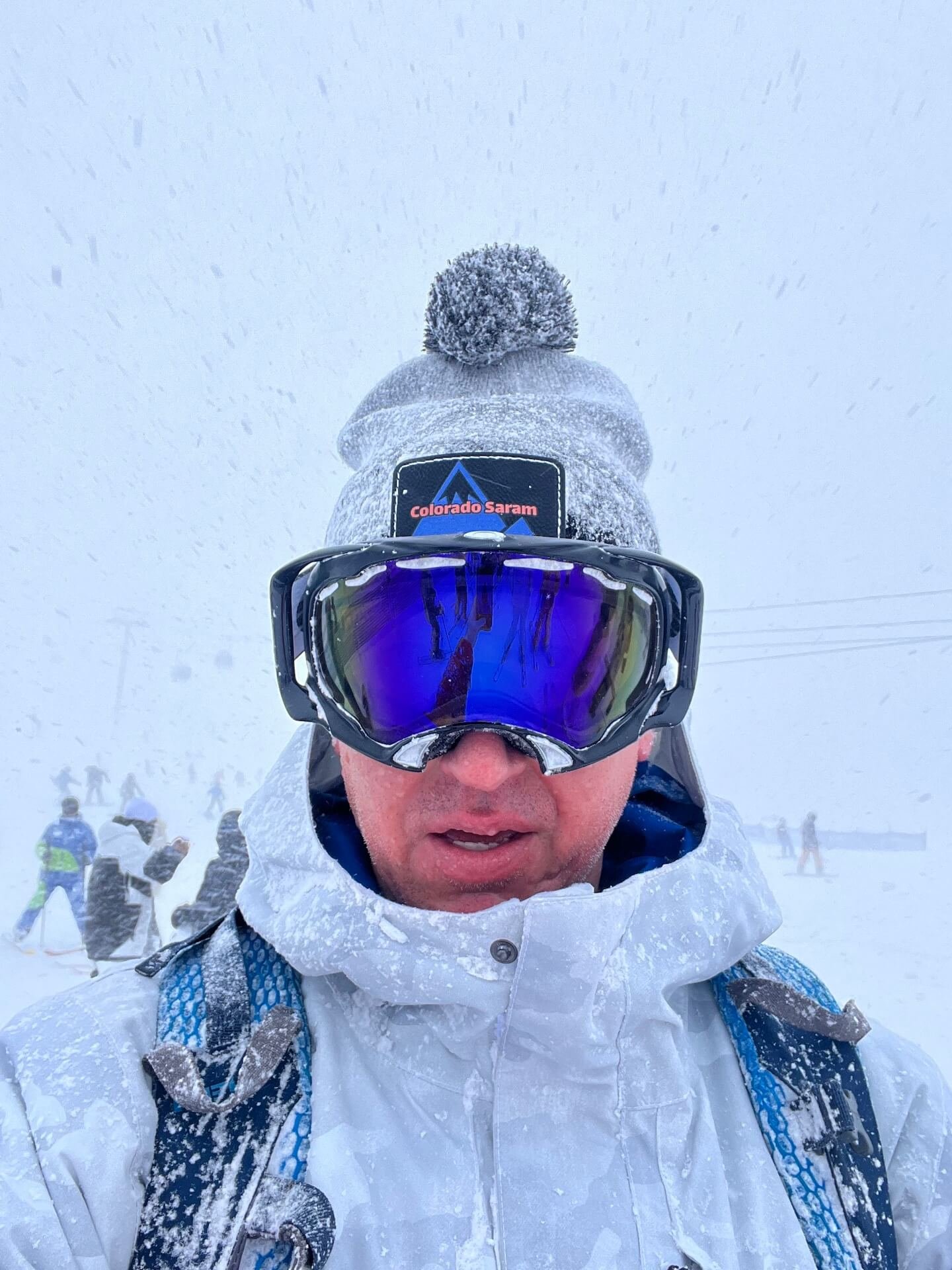
❓ Niseko vs Rusutsu FAQs
Can you day trip between Niseko and Rusutsu?
Yes. The easiest way is by rental car — it’s only a 20–30 minute drive between the two resorts, even in snowy conditions. If you’re not driving, there are also resort shuttle buses that connect Niseko and Rusutsu, though you’ll need to plan around fixed schedules.
Which has better snow?
Both Niseko and Rusutsu get incredible Japow, but conditions can vary from day to day. Rusutsu often holds powder stashes longer in the trees thanks to smaller crowds, while Niseko offers more terrain to explore when conditions are good.
Is Niseko worth it in 2025?
Absolutely. The snow, terrain, and energy are still world-class. Just know that Niseko is busier than it was a decade ago, so lift lines and packed restaurants are part of the experience during peak season.
Which pass works where? (Ikon vs Epic)
The Ikon Pass covers Niseko United (which includes Grand Hirafu, Hanazono, Niseko Village, and Annupuri), while the Epic Pass works at Rusutsu. If you already have one of these passes, it can make the decision easier. Just note that pass access can change from season to season, so double-check the official Ikon and Epic sites before you book. Buying in advance often saves money compared to paying on arrival.
Do I need powder skis in Japan?
Yes — if you want to make the most of Japan’s famous Japow, powder skis make a huge difference. Standard all-mountain skis will work, but you’ll float better and have more fun with a wider, rockered setup. Bringing your own is fine if baggage fees aren’t a concern, but for most travelers it’s easier to rent. I recommend Rhythm Japan in Niseko for high-end gear, including top models from brands like K2, Armada, and Blizzard, all tuned for Hokkaido’s deep snow.
👉 A 5–7 Day Hokkaido Ski Itinerary (2025 Guide)
👉 Hokkaido Ski Transportation Guide
👉 Skiing and Travel in South Korea
👉 Beyond Japow: My Search for the Next Great Ski Destination in Asia
🎒 Stay Connected and Keep Exploring
🧭 Need Help Planning Your Trip?
Not sure where to stay, how to compare lift passes, or whether to rent a car? I offer free one on one planning support for independent travelers.
This is not a travel agency. It is just me using nearly two decades of Asia travel experience to help skiers build trips that actually work in real life.
👉 Request free ski trip help →

🇯🇵 Japow Apparel
During our trips, we were surprised by how hard it was to find ski themed designs in Niseko or Rusutsu that actually felt true to the Hokkaido experience. So I started creating my own Japow apparel line based on the time I have spent here.
You can browse hoodies, hats, and long and short sleeve shirts inspired by Niseko, Rusutsu, and the Japow scene.
Ski trips are not cheap, and injuries, stolen gear, or trip delays can derail a great itinerary. That is why I always recommend traveling with insurance.
I use SafetyWing for flexible, affordable coverage that works well for international trips and resort skiing. Their base plan covers emergency medical care, trip delays, and gear protection. Recreational skiing and snowboarding at marked resorts are included.
If you are planning sidecountry or backcountry days, look into their Adventure Sports add on or a more specialized policy. For most Japow trips, the standard plan is solid.
🏔️ What’s Next for Me: Looking Beyond Japow
Hokkaido remains one of my favorite places to ski, but there is a whole world of powder beyond Niseko and Rusutsu. As Japow has become more crowded, I have been exploring other corners of Asia, including Kyrgyzstan, Kazakhstan, and the high Himalayas.
Next season, I am taking things a step further. After plenty of research and internal debate, I have locked in plans to ski Gulmarg in Kashmir, India. It is one of the most remote, raw, and rewarding lift served ski zones on the planet.
If you are curious why I chose Gulmarg for 2026, you can read the full story here:
👉 Why I’m Skiing Gulmarg in 2026 (Despite the Risks) →
And if you want a bigger picture look at how I compared places like Kashmir, Kyrgyzstan, Kazakhstan, and western China, check out this guide:
👉 Beyond Japow: Exploring the Next Great Ski Destinations in Asia →
